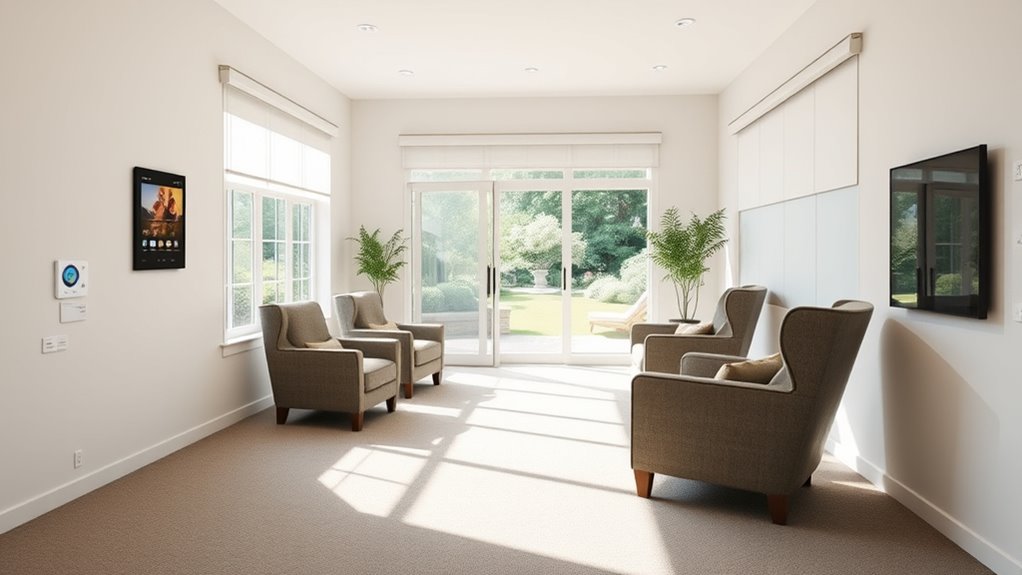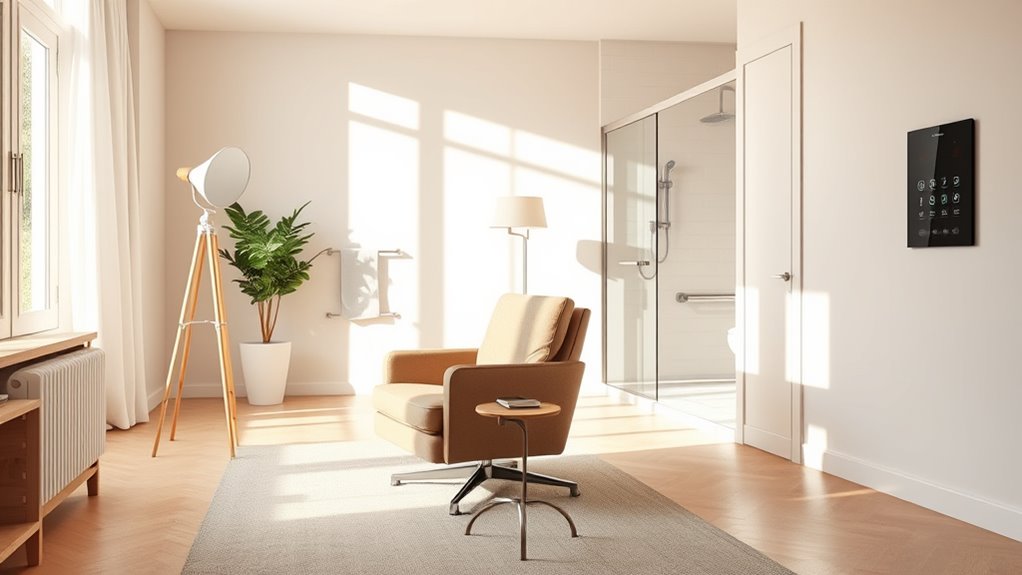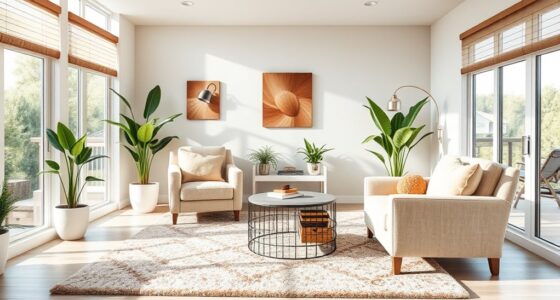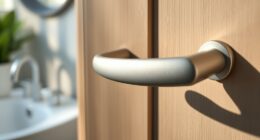In 2025, age-friendly home features focus on smart technology, universal design, and safety enhancements. You’ll see automated lighting, voice-controlled devices, and smart security systems that make daily life easier and safer. Wider doorways, curbless showers, and non-slip floors improve accessibility within your home. These trends promote independence while reducing fall risks. Stay with us to explore how these innovations can transform your living space into a safer, more adaptable environment.
Key Takeaways
- Widespread adoption of integrated smart home systems for enhanced safety, security, and ease of control.
- Universal design features like wider doorways and curbless showers for improved accessibility.
- Smart sensors and automation for fall detection, medication reminders, and real-time safety alerts.
- Voice-activated technology enabling effortless control of lighting, climate, and security systems.
- Emphasis on seamless integration of adaptable features that support long-term independence and safety.

Creating an age-friendly home is essential for ensuring safety, independence, and comfort as you age. One of the most impactful ways to achieve this is by integrating smart technology and universal design principles into your living space. These features not only make daily routines easier but also promote a sense of security and autonomy, allowing you to enjoy your home well into later years.
Smart technology has revolutionized age-friendly living by offering innovative solutions that simplify everyday tasks. Smart lighting, for example, can be programmed to turn on automatically when you enter a room or adjust based on the time of day. This reduces the risk of trips and falls in dark areas. Voice-activated assistants like Alexa or Google Home can control lighting, thermostats, and even lock doors with simple commands, eliminating the need to reach for switches or keys. Smart security systems provide real-time alerts on your phone if there’s suspicious activity or if someone enters your home, giving you peace of mind. Additionally, smart sensors can monitor movement, detect falls, or track medication schedules, alerting caregivers or family members if needed. These technologies are designed to integrate seamlessly, making your home more responsive and adaptive to your needs. Incorporating adaptive technology can further enhance the functionality and safety of your living environment.
Universal design plays a vital role in creating a truly accessible and functional environment. It emphasizes features that are usable by everyone, regardless of age or ability. Think wider doorways that accommodate mobility aids like walkers or wheelchairs without any hassle. Installing lever-style door handles instead of traditional knobs makes opening doors easier for those with limited grip strength. Curbless showers eliminate the barrier of a step, reducing fall hazards and making bathing safer. Using non-slip flooring throughout your home enhances safety, especially in areas prone to moisture. Universal design also encourages ergonomically positioned light switches and countertops at accessible heights, so you don’t have to strain or reach awkwardly. When combined with smart technology, universal design creates a home that’s not only safe but also flexible and supportive of changing needs over time.
Frequently Asked Questions
How Do Age-Friendly Designs Impact Property Value?
You’ll find that age-friendly designs boost your property value by appealing to a broader market. Features like senior safety enhancements make your home more attractive to future buyers or renters, especially those seeking accessible living spaces. Investing in these upgrades not only guarantees safety but also increases your property’s appeal as a smart property investment, giving you peace of mind knowing your home remains competitive and valuable in the evolving real estate market.
Are Age-Friendly Features Cost-Effective for Homeowners?
You might wonder if age-friendly features are cost-effective for homeowners. Conducting a thorough cost analysis helps you weigh the upfront expenses against long-term benefits. Incorporating affordability strategies, like prioritizing essential features first, makes these modifications more accessible. In the end, investing in age-friendly design can save you money over time by reducing maintenance costs and increasing your home’s value, making it a smart, cost-effective choice.
Can Existing Homes Be Easily Retrofitted With These Features?
You can retrofit existing homes with age-friendly features, but it might come with some challenges. Retrofit challenges include maneuvering renovation costs and ensuring structural changes meet safety standards. While some modifications, like installing grab bars or widening doorways, are straightforward, others, such as bathroom upgrades, may require more extensive work. Planning ahead and consulting professionals can help you manage renovation costs and make the process smoother.
What Are the Best Materials for Durability and Safety?
Imagine your home as a fortress—what materials best serve your safety? You should opt for non-slip flooring to prevent falls and impact-resistant windows to withstand accidents and harsh weather. These durable, safety-focused materials not only protect you but also add longevity to your home. By choosing high-quality, resilient options, you guarantee your space remains secure, comfortable, and ready for the future.
How Do These Features Accommodate Future Health Changes?
You can guarantee your home adapts to future health changes by incorporating features that support future mobility and smart health monitoring. These include wider doorways, grab bars, and accessible layouts, making movement easier as mobility needs change. Smart health monitoring systems alert you to health issues early, allowing proactive care. By planning for these features now, you create a safe, flexible space that supports your evolving health and independence.
Conclusion
As you embrace these age-friendly features, you’re creating a safer, more comfortable home for your loved ones. Did you know that falls are the leading cause of injury among seniors, yet simple modifications can reduce this risk by up to 50%? By incorporating these trending features, you’re not only enhancing safety but also fostering independence. Your proactive choices today can make a lasting difference in your family’s well-being tomorrow.









